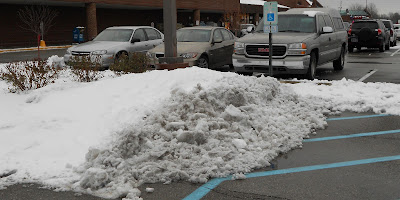Bonnie Sherr Klein, Beep Beep Bubbie (illustrated
by Élisabeth Eudes-Pascal),
Vancouver:
Tradewind Books, 2020 (ISBN
978192689023)
Am
I reverting to childhood? After enjoying Doorkins the Cathedral Cat, now I’m reading another
children's
book and enjoying it, too.
But then, in Matthew 18, we
are told that Jesus of
Nazareth said we should be
like children. Full
beep ahead!
It’s
a charming story. Bubbie
is the grandmother of two siblings, Kate and Nate. She
arrives for a visit on a new
scooter that beeps a lot. The
group rides away on
the bus to a market. Here
they have a great time (told
in story and art).
Along
the way, there’s a lot to think about. The
children face their
fears
and deal with them. At first,
Kate is afraid that Bubbie
has changed by using the
scooter. But
as the story proceeds, Kate learns
that the scooter, like all mobility devices, is a helpful tool. The
person using it is still the same beloved character.
The
children also learn some history. Bubbie tells them that “long
ago, people who had trouble walking were stuck indoors” (6).
Although the pandemic has
interfered recently,
people with disabilities are no longer expected to stay at home and
hide. Even the “ugly laws” and many other ableist restrictions
have been repealed or removed—although anyone who tries to scoot or
wheel around most areas will find that a
lot of infrastructure problems remain.
For
one infrastructure concern, there’s riding the bus, with all of its
steps. No problem, the
children learn, as the bus
has a ramp. Some of us who’ve
had a lot of public transit experience will
be happy to learn that the ramp works and the operator knows how to
use it. When the group
gets
on the bus, some some people
complain that they have to move to clear the access space.
Remarkable, isn’t it, that
we also have to clear able-bodied parkers and whatnot out of accessible parking
spaces.
 |
blocked accessible space
|
At
the park, other children are shown using wheelchairs, and the text
states that they make friends. After playing and enjoying the market,
they return, where there’s another history lesson. At
home, Kate starts reading and
learns
about Frances Willard, who
named her bicycle Gladys. In a sign of acceptance, she asks
if they can name the scooter
Gladys and decorate it.
In
the end, this is a wonderful
story about learning, one that points out many dimensions of
disability and the effects of accessibility. Go
Gladys!--and the
next time someone asks if I want a bicycle horn for my wheelchair, I
may say yes.
Disclaimer:
I was provided with an electronic copy of the book in response to a
call for reviews on the Disability Studies in Humanities group.


No comments:
Post a Comment